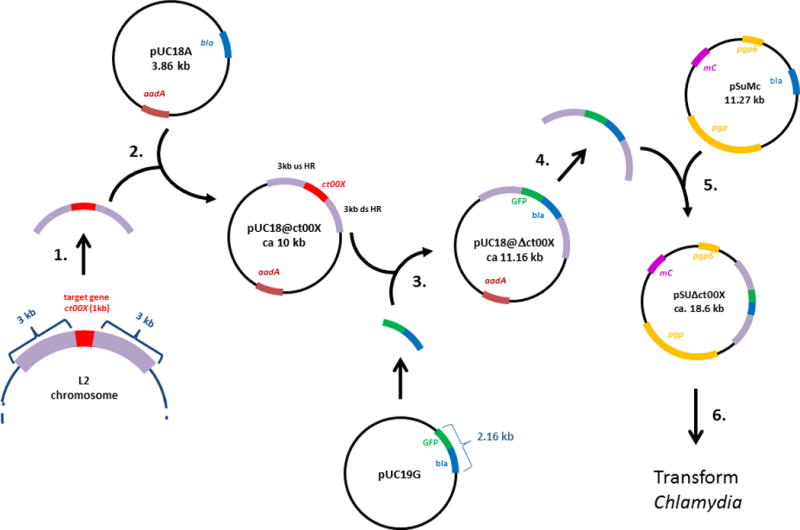Figure 1.

Schematic of overall cloning strategy (Basic Protocol 1) used for constructing suicide plasmids. 1. The gene of interest (ct00X) is amplified from C. trachomatis L2 genomic DNA with 3 kb of up (us)- and down (ds)-stream homology arm (HR) DNA (steps 1–3). 2. The PCR product is used in an insertion/deletion PCR reaction using pUC18A as template such that the chlamydial DNA sequence replaces plasmid-encoded bla. (steps 4–7). 3. The target gene (ct00X) is deleted using Away primers, annealing immediately outside the ct00X coding sequence, in a divergent PCR reaction to amplify the remaining pUC18@ct00X construct. The divergent PCR product is then ligated to the bla and gfp cassette amplified from pUC19G to generate a pUC18 plasmid where ct00X has been replaced by bla-gfp (steps 8–13). 4. The chlamydial DNA required for homologous recombination plus the bla-gfp selection marker is PCR amplified using engineered primers (Step 14). 5. An insertion PCR is used to replace the bla gene in pSuMc with the homologous-recombination construct (steps 15–18). 6. The completed suicide plasmid is propagated in dam−/dcm− E. coli prior to the transformation of chlamydiae outlined in protocol 2 (step 19).
